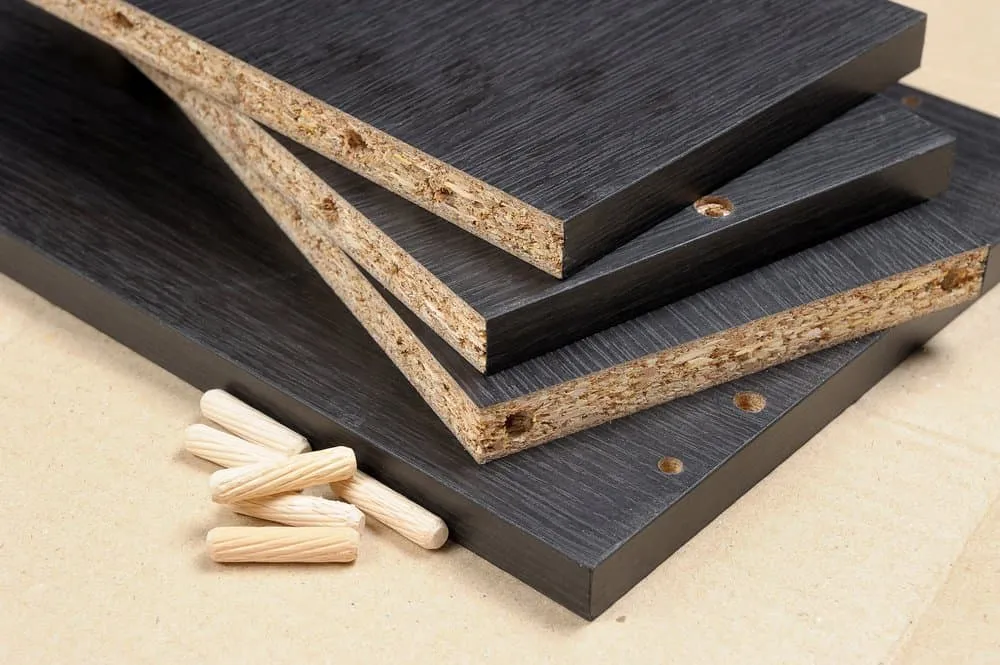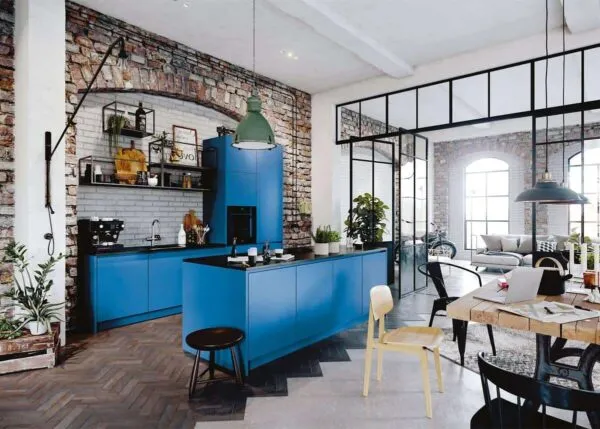Medium Density Fibreboard (MDF) is an engineered wood product manufactured by disintegrating hardwood or softwood residuals into wood fibres, usually in a defibrator, mixing it with wax and a resin binder, and shaping it into panels by applying high temperature and pressure. MDF boards or sheets are typically available in different price ranges with thicknesses ranging from 4 to 25 mm and can be plain or laminated for further protection. The material is also available in a number of different finishes.
Medium Density Fibreboards have a higher density than plywood. Although it is made up of separated fibres, it can be used as a building material in the same way as plywood is. It’s denser and stronger than particle board.
Applications
1. Furniture
2. Wall panelling
3. Wall partitions
4. Textured walls
5. Moulding
6. Cornices
7. Medium Density Fibreboard TV unit
8. MDF flooring

Image Source: doityourself.com
Types of Medium Density Fibreboard
Different kinds of MDF are found which are labeled by color. Followings are the main type of MDF boards:
1. Ultra-light MDF plate (ULDF)
2. Typically green MDF (moisture resistant)
3. Typically red or blue MDF (fire retardant)
Features of Medium Density Fibreboard
Not all MDF is alike; the texture, density, colour, and other characteristics vary depending on the material used. Today, a number of materials are used to make MDF boards. Other woods, scrap, recycled paper, bamboo, carbon fibres and polymers, steel, glass, forest thinning, and sawmill off-cuts are just a few examples.
Some of its features are as follows:
1. Durability: Since MDF boards are made with antifungal chemicals, they can be used in tropical or damp environments. Furthermore, this board is composed entirely of hardwood eucalyptus, making it suitable for painting and polishing.
2. Strength: Medium Density Fibreboard is a complex material to work with because it is heavy, stiff, and robust. MDF’s high glue concentration causes cutting blades to quickly dull. When working with MDF, it’s recommended to use carbide tools. Use screws and nails to join components together as well.
3. Smooth surface: MDF board has a smooth surface, uniform density, and good internal bond, making it perfect for routing, carving, lacquering, and painting because it is formed of small particles.
4. Uniformity: Because of its homogeneous density, the Medium Density Fibreboard, unlike other timbers, does not have natural grain. This board is easy to saw in any direction because it is free of knots. Furthermore, if you use sharp tools and use them appropriately, the edges are quite smooth.
Buy laminated MDF board & sheet from the best Medium Density Fibreboard manufacturers at the best price from us.

